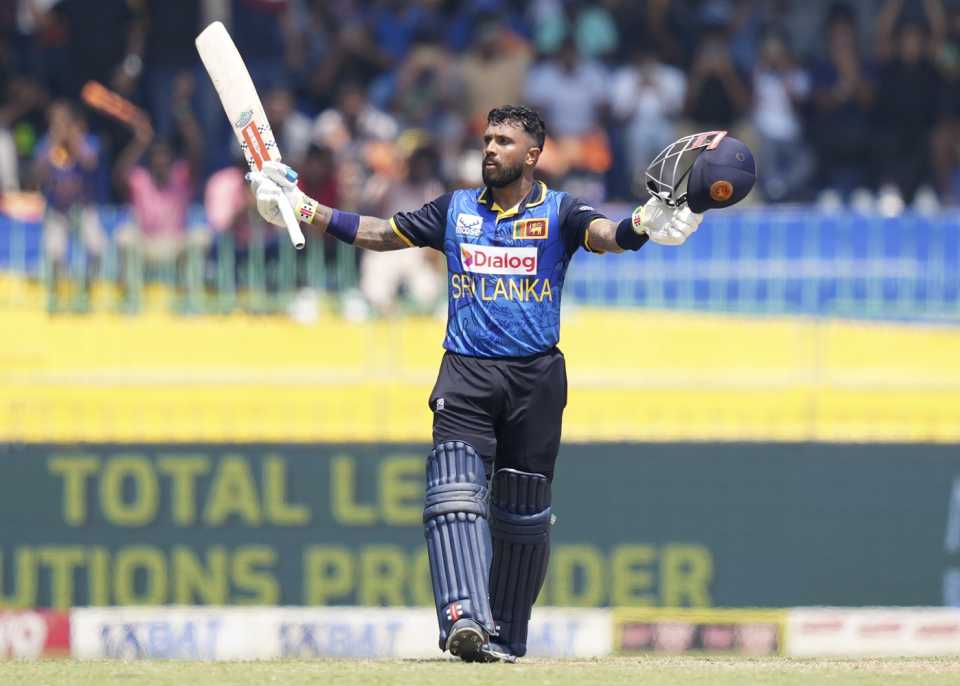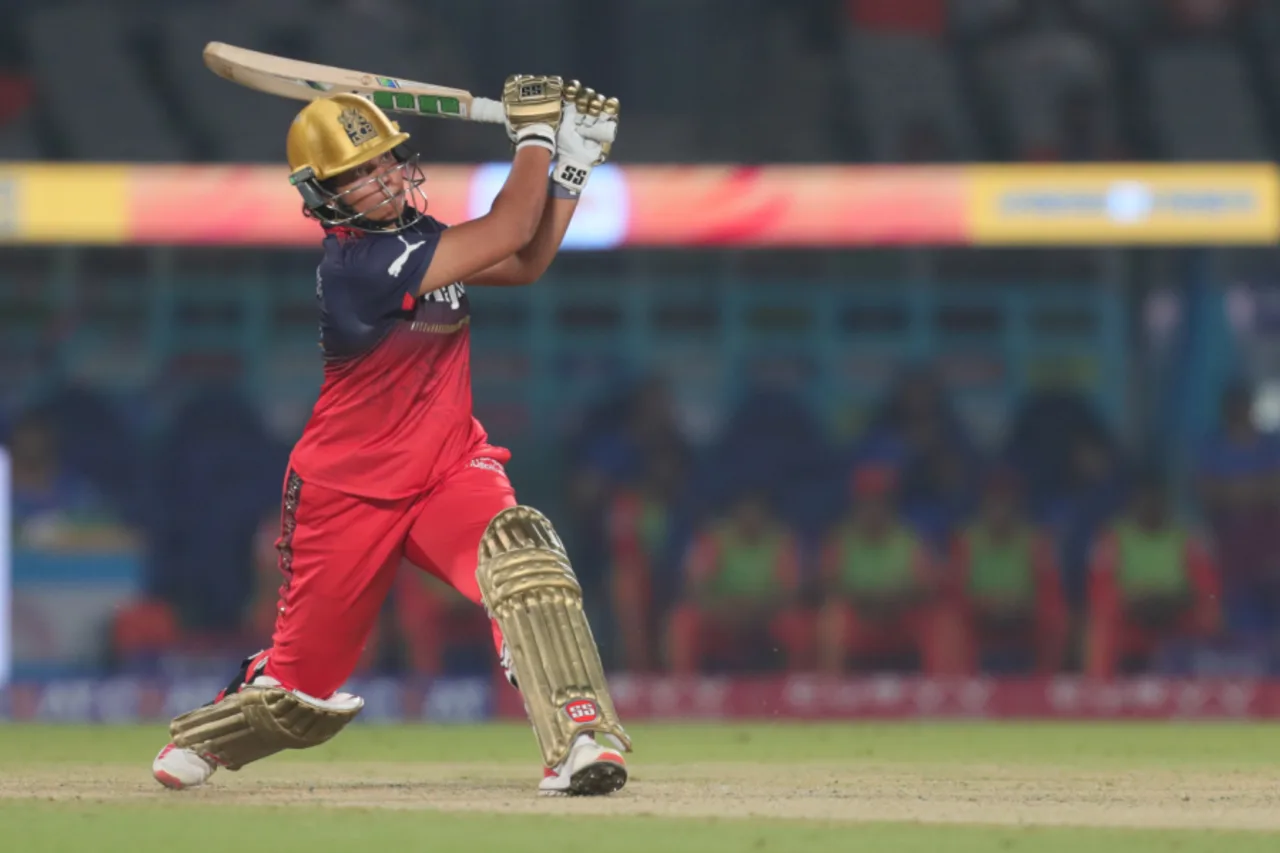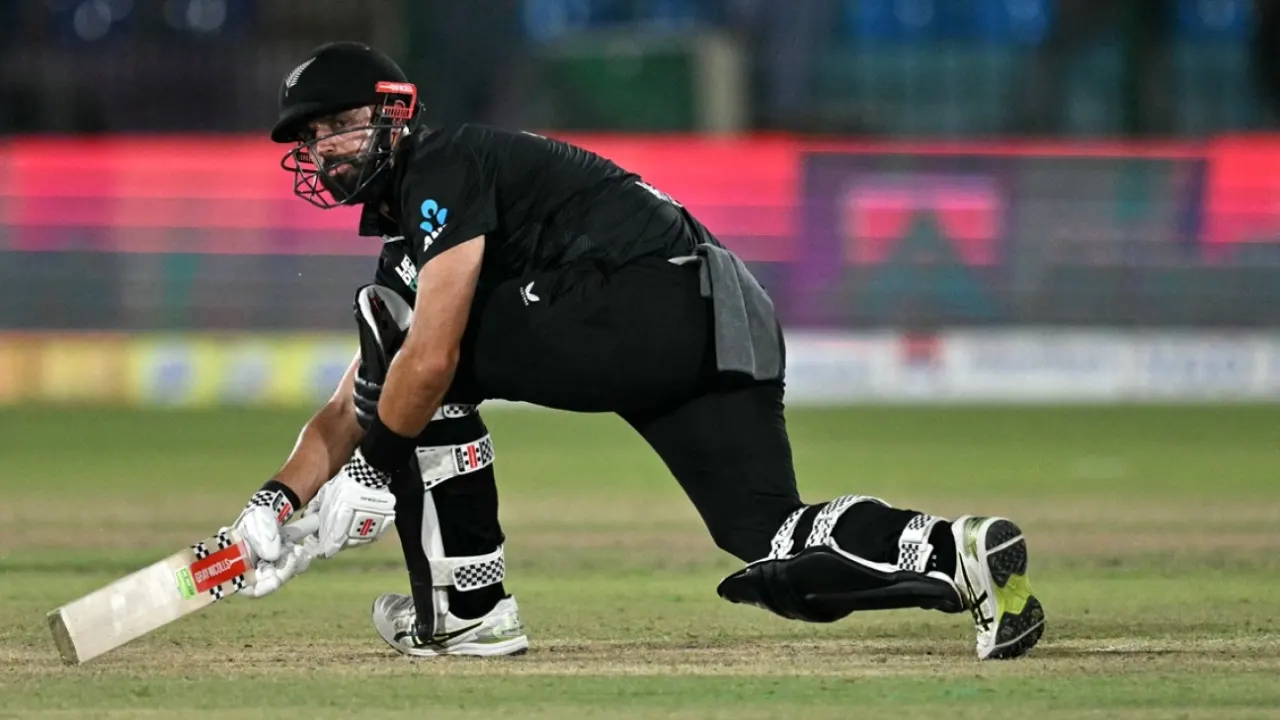Latest News
Kusal Mendis ton, Asalanka 78* lifts Sri Lanka to 281

Experimenting in their final match ahead of the Champions Trophy, a new-look Australia bowling attack toiled on a benign surface in Colombo as Kusal Mendis and skipper Charith Asalanka powered Sri Lanka to 281 for 4 in the second ODI. Mendis made 101 off 115 balls and had strong partnerships with Asalanka and Nishan Madushka as Sri Lanka remained on track for a series win.
There was a distinct lack of pace and bounce compared to the first ODI at the same venue. But there was occasional sharp turn on the dry surface which Sri Lanka’s spinners will try to exploit in Australia’s innings.
Australia’s seam bowling stocks have been decimated with Pat Cummins, Mitchell Starc, Josh Hazlewood, Mitchell Marsh and Marcus Stoinis missing this series and the Champions Trophy for various reasons. With Spencer Johnson and Nathan Ellis rested, left-arm quick Ben Dwarshuis was given an opportunity and bowled tidily with the new ball. Sean Abbott rebounded from a sloppy performance in the first ODI to finish with 1 or 41 off ten overs. Legspinner Tanveer Sangha played his first ODI in 16 months but returned the figures of 0 for 34 from 5 overs.
Australia have a tough chase ahead, but their batting order has been bolstered by the inclusions of Travis Head, Josh Inglis and Glenn Maxwell with Cooper Connolly, Alex Carey and Marnus Labuschagne making way.
Asalanka once again elected to bat and hoped for an improved batting performance after their top-order struggles in the opener. Dwarshuis took the new ball in Johnson’s absence and opener Pathum Nissanka started well by cracking him through the covers before becoming bogged down against accurate new-ball bowling.
Allrounder Aaron Hardie again shared the new ball having performed strongly in game one with sharp seam movement from a back of a length. Hardie quickly realised this surface was flatter and reverted to attacking the stumps. He was rewarded when a frustrated Nissanka swung across the line and was bowled off the inside edge. Having only returned to bowling at the backend of the BBL, Hardie hit the deck hard and looked physically strong in a positive for Australia ahead of the Champions Trophy.
Mendis, who scored twin fifties in the second Test, sparkled from the get-go and played the new ball with ease as the partnership blossomed. Replacing Avishka Fernando at the top of the order, Madushka was decisive in his movements and strong off the back foot as stand-in captain Steven Smith turned to spin.
In a fairly uncommon sight these days, legspin was utilised at both ends with Sangha and Adam Zampa bowling in tandem. Playing his third ODI and first since just before the 2023 World Cup, Sangha was coming off a strong backend to the BBL where he helped Thunder reach the final. But he failed to threaten with Madushka attacking and hitting him aerially over cover, while Zampa improved from his sub-par performance in the first ODI but a breakthrough was not forthcoming.
Mendis whacked Zampa for consecutive boundaries to reach his half-century off as many balls and Madushka soon reached his milestone as they closed in on a century partnership. But Madushka was unable to kick on and hit a well-directed bouncer from Dwarshuis straight down the throat of Zampa at fine leg.
Just as he has through the tour, Smith trusted his gut instincts and the reintroduction of Abbott worked a treat when out-of-form Kamindu Mendis chopped onto his stumps on 4.
After his extraordinary ton in the first game, Asalanka started nervously when he mishit Zampa only for Maxwell to misjudge the high ball and he was unable to take a trademark miraculous catch this time around.
Asalanka found his groove and blasted Zampa down the ground for six in a belligerent stroke reminiscent of his game-one heroics. After bowling three overs in his initial spell, Sangha returned in the 41st over and immediately found sharp turn and bounce.
But Mendis remained undaunted and registered his fifth ODI century before holing out to Zampa in the 45th over. But Asalanka, who finished unbeaten on 78 from 66 balls, continued on his merry way along with Janith Liyanage to lift Sri Lanka to a formidable total.
Brief scores:
Sri Lanka 281 for 4 in 50 overs (Kusal Mendis 101, Charith Asalanka 78*, Nishan Madushka 51, Sean Abbott 1-41) vs Australia
(Cricinfo)
Latest News
Ghosh, Ahuja script stunning comeback as RCB complete WPL’s biggest chase

A run-fest that produced the highest aggregate as well as the highest successful chase in the WPL ended with defending champions Royal Challengers Bengaluru chasing down 202 in a canter in Vadodara.
Richa Gosh who was dropped first ball, showed there was more to her game than just brute force. Her 23-ball half-century injected momentum into RCB’s chase after Ellyse Perry’s dismissal for 57 left them needing 93 off 46 balls. Ghosh’s unbeaten, 26-ball 64 included a stunning takedown of Gujarat Giants captain Ashleigh Gardner in a 23-run 16th over to turn the game on its head.
Ghosh was supported by the diminutive left-hander Kanika Ahunja who scored an unbeaten 13-ball 30. Their unbroken fifth-wicket stand of 93 off just 37 balls completed a sensational RCB turnaround, consigning Gardner’s scarcely believable 37-ball 79 not out from earlier in the evening to second best.
Renuka Singh struggled for accuracy in her first two overs, but her first attempt at bowling stump-to-stump rather than searching for devious inswing led to Laura Wolvaardt being bowled for 6 in the fifth over. D Hemalatha came in at N0. 3 for Giants rather than Harleen Deol, and they were two down when she sliced the offspinner Ahuja to point. Giants were 41 for 2 in the seventh.
Beth Mooney shifted gears in the 10th over after she successfully overturned an lbw appeal through DRS off legspinner Georgia Wareham, whome she hit for three back-to-back fours while bringing up a 37-ball half-century. Mooney then stepped out and lofted legspinner Prema Rawat inside-out to the extra-cover boundary, but fell in the same over when she picked out Smriti Mandhana at midwicket for 56.
That brought in Deandra Dottin and she took just four balls to announce herself. She first thumped Kim Garth over mid-off and then played a neat little glide past the keeper to the deep third boundary.
At the other end, Gardner continued from where she had left off at the Women’s Ashes earlier in the month by taking toll of Rawat’s inexperience and hitting her for three consecutive sixes. After hitting the first two over long-off and long-on, she pummelled the half-tracker that followed over deep backward square leg.
Gardner was able to sustain this momentum against Wareham in the following over when she hit her for back-to-back fours. The Dottin-Gardner partnership had surged to 63 off 26 balls when Perry dropped a set Dottin at long-on, but it wouldn’t cost RCB much as she fell four balls later.
Gardner ended the innings in a blaze, taking down the teenaged seamer VJ Joshita as Giants hit 49 off the last three overs. Garner’s innings was studded with three fours and eight sixes.
Brief scores:
Royal Challengers Bengaluru Women 202 for 4 in 18.3 overs (Richa Ghosh 64*, Ellyse Perry 57, Raghvi Bist 25, Kanika Ahuja 30*; Ashleigh Gardner 2-33) beat Gujarat Giants Women 201 for 5 in 20 overs (Ashleigh Gardner 79, Mooney 56, Deandra Dottin 25; Renuka Singh 2-25) by six wickets
[Cricinfo]
Latest News
Man describes being swallowed by whale

The first thing kayaker Adrián Simancas noticed after he was eaten by a whale was the slime.
“I spent a second realising I was inside the mouth of something, that maybe it had eaten me, that it could have been an orca or a sea monster,” the 23-year-old told BBC Mundo.
Adrián had started to think how he might survive inside the humpback whale “like Pinocchio” – then the creature spat him back out.
The Venezuelan kayaker had been paddling through the Strait of Magellan, off Chile’s Patagonian coast, with his father when he felt something “hit me from behind, closing in on me and sinking me”.
His father, Dall, was able to capture the short lived oedeal on video just meters away.
“I closed my eyes, and when I opened them again, I realised I was inside the whale’s mouth,” Adrián told the BBC. “I felt a slimy texture brush my face,” he recalled, adding that all he could see was dark blue and white. “I wondered what I could do if it had swallowed me since I could no longer fight to stop it,” he said.
“I had to think about what to do next.” But within seconds, Adrián started to feel as though he was rising toward the surface.
“I was a little afraid of whether I would be able to hold my breath because I didn’t know how deep I was, and I felt like it took me a long time to come up.
“I went up for two seconds, and finally I got to the surface and realised that it hadn’t eaten me.”
In a nearby kayak, Adrián’s father Dall Simancas watched on in disbelief.
The pair had just crossed Eagle Bay – down the coast from Punta Arenas, Chile’s southernmost city – when he heard a crash behind him. “When I turned around, I didn’t see Adrián.”
“I was worried for a second, until I saw him coming up out of the sea,” the 49-year-old said.
“Then I saw something, a body, which I immediately interpreted as most likely being a whale because of its size.”
Dall had fixed a camera to the back of his kayak to record the rising waves – which captured his son’s remarkable experience.
Watching the footage back, Adrián – who moved with his father to Chile from Venezuela seven years ago in search of a better quality of life – was shocked to see just how enormous the whale had been.
“I hadn’t seen the moment when the back appears, and the fin is visible. I didn’t see it, I heard it. That made me nervous,” he said.
“But later, with the video, I realised that it actually appeared before me in such a huge size that perhaps if I had seen it, it would have scared me even more.”
For Adrián, the experience was not just about survival – but he said felt he had received a “second chance” when the whale spat him out.
The “unique” experience in one of the most extreme places on Earth had “invited me to reflect on what I could have done better up until that point, and on the ways I can take advantage of the experience and appreciate it as well”, he added.
But there is a simple reason he was able to escape the whale so quickly, according to a wildlife expert.
Humpback whales have narrow throats “about the size of a household pipe” designed for swallowing small fish and shrimp, Brazilian conservationist Roched Jacobson Seba told the BBC.
“They physically cannot swallow large objects like kayaks, tires, or even big fish like tuna,” he said.
“Ultimately, the whale spit out the kayak because it was physically impossible to swallow.”
The humpback whale likely engulfed Adrián by accident, Mr Seba suggested.
“The whale was likely feeding on a school of fish when it unintentionally scooped up the kayak along with its meal.
“When whales surface too quickly while feeding, they can accidentally hit or engulf objects in their path.”
He warned that the encounter served as “an important reminder” to avoid using paddleboards, surfboards or other silent vessels in areas where whales usually swim.
Boats used for whale watching and research must always keep their engines on, he added, as the noise helps whales detect their presence.
[BBC]
Latest News
Latham, Mitchell fifties take NZ to tri-series title after bowlers restrict Pakistan

Despite injuries to Lockie Ferguson, Ben Sears, Matt Henry and Rachin Ravindra, New Zealand clinched the tri-series title in Karachi and sounded out a warning to the hosts, five days before they meet again in the Champions Trophy opener at the same venue. In the absence of the senior quicks, Will O’Rourke stepped up admirably with a four-wicket haul, while the spinners, led by Mitchell Santner, straight-jacketed Pakistan in the middle overs, limiting them to 242.
The batters then completed the demolition job on a two-paced surface, chasing the target with 28 balls and five wickets to spare. After Devon Conway and Kane Williamson set the platform with a 71-run partnership for the second wicket, Daryl Mitchell launched from there in the middle overs, befuddling Pakistan’s spinners with his variety of sweeps – including the reverse. He struck up an 87-run stand with Tom Latham, which highlighted New Zealand’s dominance in the middle overs, before Michael Bracewell and Glenn Phillips sealed the deal.
It was Phillips who had kicked off the tri-series with an unbeaten 106 off 74 balls, his maiden ODI century, against Pakistan, before Kane Williamson reminded the world of his genius with an unbeaten century of his own in New Zealand’s second game of the tri-series against South Africa. Having bagged ducks in those two games – and also against Sri Lanka in Auckland last month – Latham made a timely return to form, and re-established himself as New Zealand’s first-choice wicketkeeper-batter with his 56 off 64 balls.
Latham had benefitted from multiple reprieves – he was dropped by Shaheen Shah Afridi off his own bowling on 15, and then by Saud Shakeel at square leg on 29. Earlier, when he was on 13, legspinner Abrar Ahmed pinged him on his pad and wasn’t given out lbw. Pakistan missed a trick by not going for a review, with ball-tracking indicating that it had pitched in line and would have crashed into the stumps.
Abrar, Pakistan’s specialist spinner, lacked penetration, and was taken for 67 in his ten overs. In stark contrast, New Zealand’s premier spinner Santner was unhittable, coming away with his most economical ten-over spell in ODI cricket. Forty of his 60 balls were dots as Santner varied his pace from the mid-70s kph range to mid-90s kph with remarkable control. Bracewell also kept things tight, finishing with 2 for 38 in his ten overs.
The first powerplay was a portent for Pakistan’s go-slow. They played out 48 dots in the powerplay, in which they managed 48 for 2, and failed to hit a high tempo through the innings. After taking a sequence of short balls away from Fakhar Zaman with his sharp angle from over the wicket, including two off-side wides, O’Rourke brought a fuller one back into the opener and had him chipping a catch to square leg for 10 off 15 balls.
Babar Azam then brought the Karachi crowd alive when he laced Jacob Duffy through the covers for four, and became joint fastest to 6000 ODI runs in his 123rd innings, alongside Hashim Amla. Nathan Smith, the seam-bowling allrounder, though spoiled the party when he had Babar spooning a return catch for 29 off 34 balls in his first over.
Pakistan captain Mohammad Rizwan needed 13 balls to get off the mark, and then four more balls to find the boundary. Salman Agha was more fluent at the other end, wedging the ball into the gaps as the pair forged an 88-run partnership for the fourth wicket.
The stand, however, ended when O’Rourke returned to the attack and had Rizwan chopping on with a cross-seamer, which stopped on him, for 46 off 76 balls. After hitting hard lengths and the splice of batters with high pace and bounce in the early exchanges, O’Rourke proved that he could be just as effective with the older ball. Almost five overs later, Bracewell had Agha miscuing a reverse sweep to short third to leave Pakistan at 161 for 5 in the 37th over.
Tayyab Tahir then gave the innings a leg-up with his 38 off 33 balls, but his innings was cut short by Duffy in the 42nd over. In the last eight overs, New Zealand conceded just four boundaries, keeping Pakistan to 242.
The new ball did a lot more under lights, with Naseem Shah and Shaheen Shah Afridi using the swing and seam movement on offer to apply pressure on Conway and Williamson. In the first powerplay during the chase, the broadcaster put up a graphic showing the average swing achieved during the two innings. New Zealand’s seamers had generated 1.5 degrees of swing, and Pakistan’s 2.4 degrees.
The experienced pair of Conway and Williamson absorbed all of that pressure, and once the ball became older and softer, they picked away Pakistan’s spinners. Williamson carted Agha’s offspin over mid-off while Conway flayed Abrar and Khushdil Shah through the covers. When Williamson tried to pop Agha over the infield once again, he caused the ball to dip and turn to castle him for 34 off 49 balls. Conway then departed two short of his half-century, but the depth in skill in New Zealand’s middle order was too much to overcome for Pakistan.
New Zealand will be strengthened further by the potential return of Ravindra and Ferguson for the Champions Trophy opener on Wednesday.
Brief scores:
New Zealand 243 for 5 in 45.2 overs (Daryl Mitchell 57,Devon Conway 48, Tom Latham 56, Kane Williamson 34, Glenn Phillips 20*; Naseem Shah 2-43) beat Pakistan 242 in 49.3 overs (Barbar Azam 29, Mohammad Rizwan 46, Salman Agha 45, Tayyab Tahir 28, Faheem Ashraf 22 ; William O’Rourke 4-43, Mitchell Santner 2-20, Michael Bracewell 2-38) by five wickets
[Cricinfo]
-

 News6 days ago
News6 days agoSLAS senior to be HC in London, several new dpl appointments
-

 Features6 days ago
Features6 days agoKen Balendra’s impact on John Keells
-

 Life style6 days ago
Life style6 days agoPolished to Perfection
-

 Midweek Review3 days ago
Midweek Review3 days agoHow USAID influenced Sri Lanka
-

 Features6 days ago
Features6 days agoThe Ceylon Journal’s Second Issue: A Captivating Dive into Sri Lanka’s Rich History and Culture
-

 Editorial4 days ago
Editorial4 days agoNeeded: ‘Ministry of Excuses’
-

 Editorial6 days ago
Editorial6 days agoCat out of the bag
-

 Opinion6 days ago
Opinion6 days agoThe Birth of the Harry Jayawardena Empire (1977)











